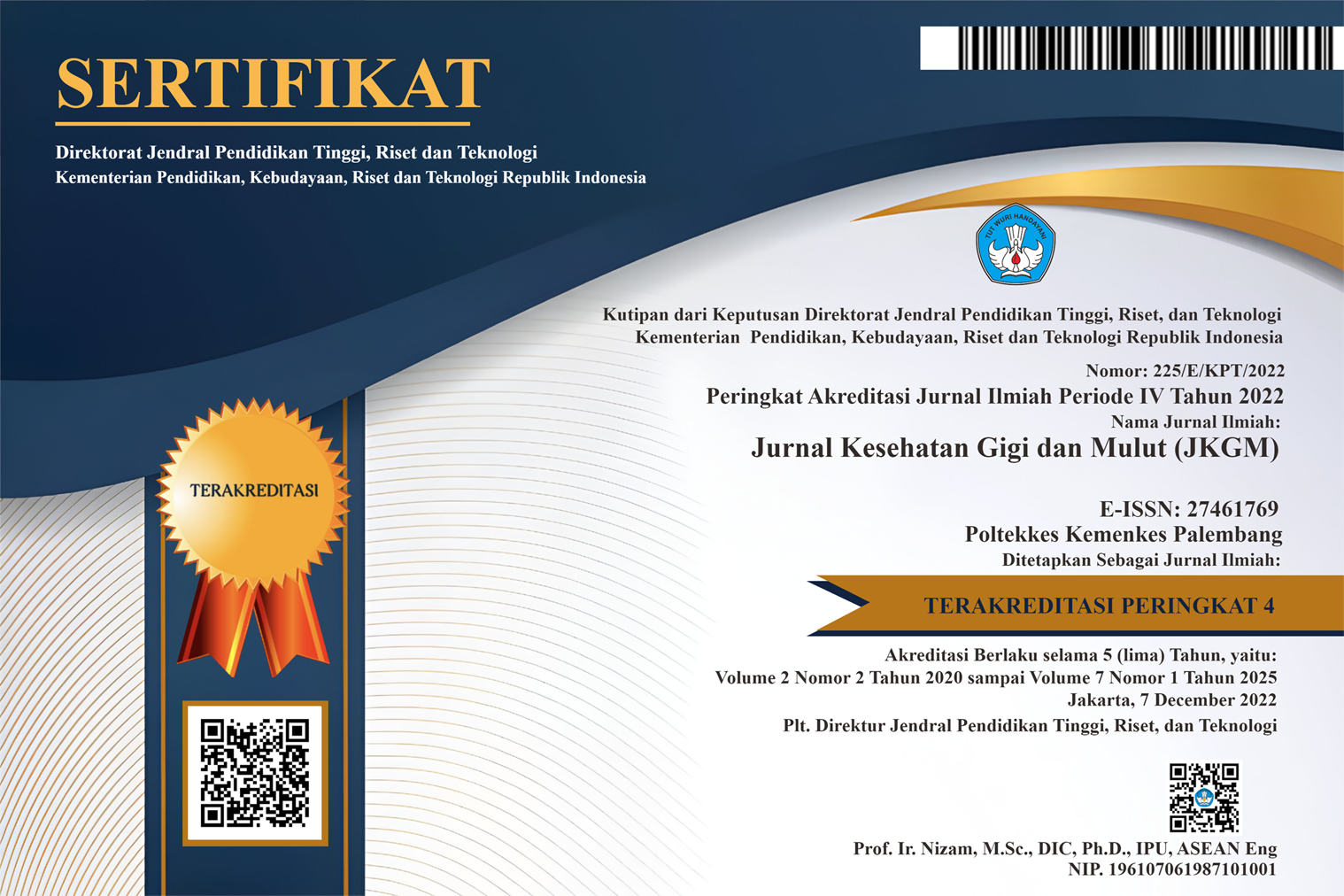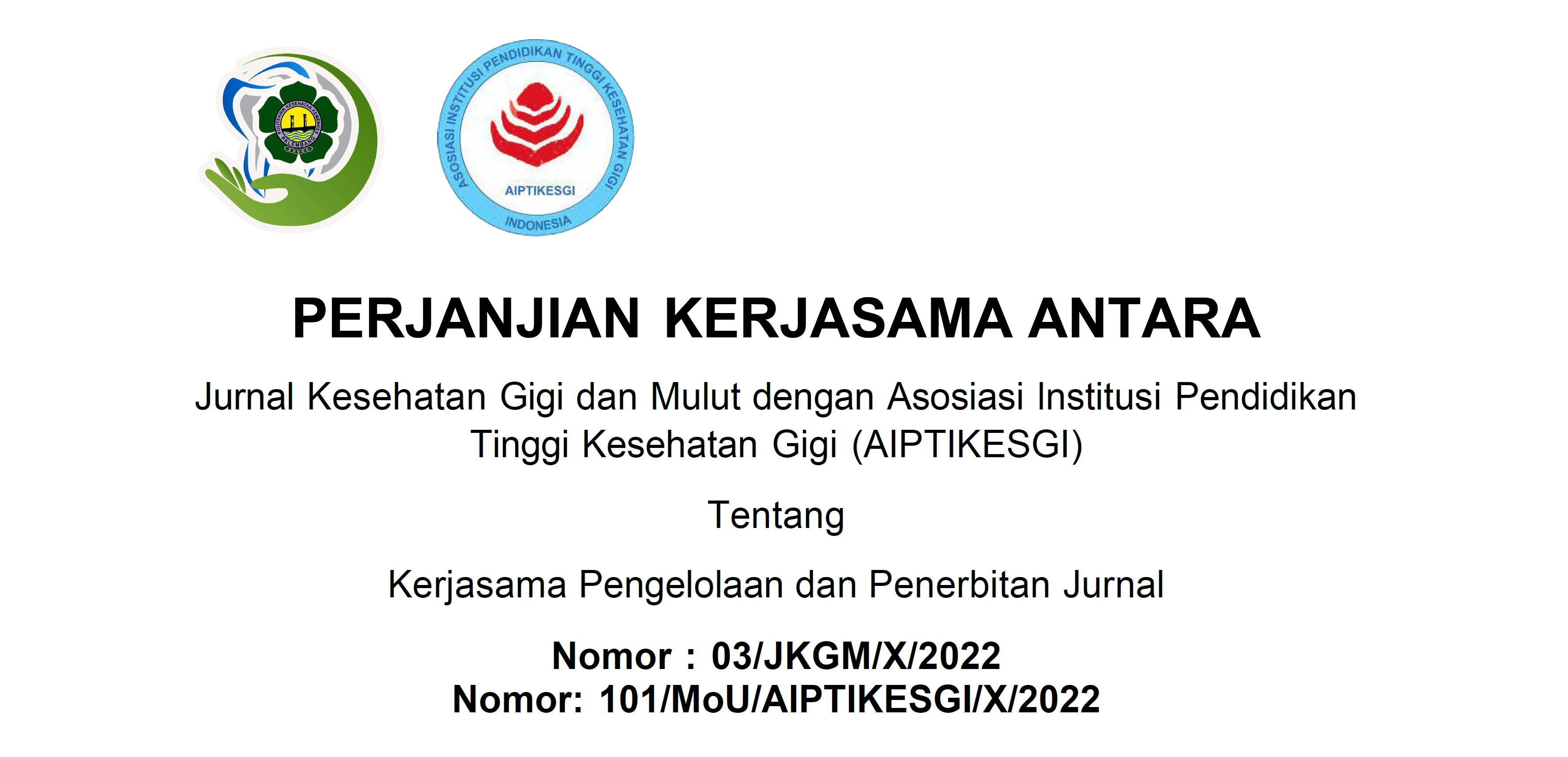TRANSMISI DAN REAKTIVASI VIRUS HERPES SIMPLEKS TIPE 1 (LAPORAN KASUS)
Abstract
Background : Herpes simplex virus (HSV) type 1 can cause recurrent infection (reactivation) in the form of herpes labialis. This viral infection can be transmitted through contact with oral secretions, with a 8-10% prevalence of patients) and 90% of close contact with patients. The purpose of this case study is to describe herpes labialis caused by contact with the patient and its treatment. Case report : A 23-year-old woman came to RSIGM Sultan Agung Semarang with the chief complaint of sores in the corner of her mouth since 4 days ago with fever, which ruptured two days later. Extraoral examination revealed 4 mm erosions with clear borders and multiple 1 mm vesicles with clear borders surrounded by erythematous based on the labial commissure dextra. Herpes labialis was diagnosed. Conclusion : Herpes labialis can be transmitted through direct contact or through oral secretions such as saliva. Giving acyclovir cream three times a day is effective for relieving symptoms and hastening healing. These lesions can be healed without scar.
Copyright (c) 2021 Jurnal Kesehatan Gigi dan Mulut (JKGM)

This work is licensed under a Creative Commons Attribution-ShareAlike 4.0 International License.
Authors who publish with this journal agree to the following terms:
- Authors retain copyright and grant the journal right of first publication with the work simultaneously licensed under a Creative Commons Attribution License that allows others to share the work with an acknowledgement of the work's authorship and initial publication in this journal.
- Authors are able to enter into separate, additional contractual arrangements for the non-exclusive distribution of the journal's published version of the work (e.g., post it to an institutional repository or publish it in a book), with an acknowledgement of its initial publication in this journal.
- Authors are permitted and encouraged to post their work online (e.g., in institutional repositories or on their website) prior to and during the submission process, as it can lead to productive exchanges, as well as earlier and greater citation of published work















